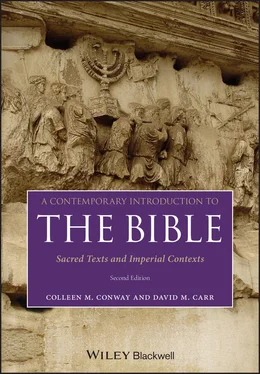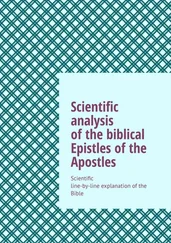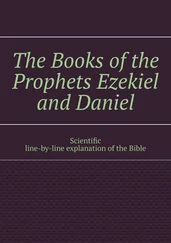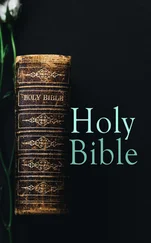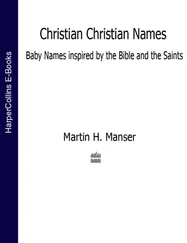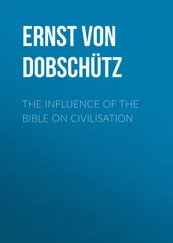1 Know the meaning and significance of the following terms discussed in this chapter:Israel (two meanings)Israelite (know the difference from “Israeli”)Yahwehliterary criticismtradition criticismhistorical criticism
2 Be able to identify the following areas on a map and describe their general characteristics:coastal plaincentral hill countryJordan ValleyJudahTransjordan
3 Know the dates and basic significance of the following overall periods of history:pre-state tribal periodproto-monarchyneighboring monarchiesJudah alonedestruction of JerusalemBabylonian exilePersian periodpost-exilic periodHellenistic periodHasmonean (Maccabean) monarchybeginning of the Roman perioddestruction of the Second Temple
4 Know the order in which the following empires dominated Israel and Judah:AssyrianBabylonianPersianHellenistic (or Greek)Roman
RESOURCES FOR FURTHER STUDY
Overviews of the History of Israel
1 Miller, J. Maxwell. The History of Israel: An Essential Guide. Nashville, TN: Abingdon, 1997.
2 Schipper, Bernd. A Concise History of Ancient Israel: From the Beginnings Through the Hellenistic Era. Translated by Michael J. Lesley. University Park, PA: Eisenbrauns, 2019.
3 Shanks, Hershel. Ancient Israel: From Abraham to the Roman Destruction of the Temple (2nd edition). Washington, DC: Biblical Archaeology Society, 1999.
Geography of Lands and Places Featured in the Bible
1 Atlas of the Bible Lands (revised edition). Maplewood, NJ: Hammond, 1990.
2 Rainey, Anson F., and Notley, R. Steven. The Sacred Bridge: Carta’s Atlas of the Biblical World. Jerusalem: Carta, 2006. Detailed. Much focus on reconstructing history.
3 Rogerson, John. The New Atlas of the Bible. London: McDonald, 1985. Organized not by historical periods, but by regions. Excellent photographs and art.
Discussions of Methods in Biblical Interpretation
1 McKenzie, Steven L., and Haynes, Stephen R. To Each Its Own Meaning: An Introduction to Biblical Criticisms and Their Application (2nd edition). Louisville, KY: Westminster John Knox Press, 1999.
2 McKenzie, Steven L., and Haynes, Stephen R. New Meanings for Ancient Texts: Recent Approaches to Biblical Criticisms and Their Applications. Louisville, KY: Westminster John Knox Press, 2013.
Especially Good Internet Resources
1 The Bible Odyssey (by the Society of Biblical Literature): www.bibleodyssey.org. This website offers a collection of short articles by biblical scholars on people, places, and things related to the Bible.
2 www.TheTorah.com. A non-profit website run by Jewish scholars with accessible articles on Tanakh/Bible
APPENDIX: ISRAEL’S HISTORY AND EMPIRES
(Prehistory of Israel: domination of Canaan by Egypt, 1450–1200 BCE)
Emergence of “Israel” in imperial power vacuum
Appearance of Israelite villages in unsettled hill country (approximately 1250–1000 BCE)
David and Solomon’s proto-monarchy in Jerusalem (approximately 1000–930 BCE)
Neighboring monarchies: southern Judah and northern Israel (from approximately 930 to 722 BCE)
Oppression by successive empires: Assyria, Egypt, and Babylonia (745–586 BCE)
Fall of northern kingdom (722 BCE)
Destruction of Jerusalem and exile of its leadership (586 BCE; also other waves of exile)
Imperial sponsorship of (formerly exiled) Judeans: post-exilic period (starting 538 BCE)
Persian-sponsored rebuilding and rule of Judah (538–332 BCE)
Hellenistic continuation of Persian policies until Hellenistic crisis (332–167 BCE)
Hellenistic crisis and emergence of Hasmonean/Maccabean monarchy (167–63 BCE)
Roman rule (starting 63 BCE with different end dates)
Destruction of the Second Temple (70 CE)
Total destruction of Jerusalem (135 CE)
2 The Emergence of Ancient Israel and Its First Oral Traditions
Chapter Outline
Chapter Overview
Imagining Early Israel
Problems in Reconstructing Early Israel
Traces of the Most Ancient Israelite Oral Traditions in the Bible
The Oral Background of Genesis
Focus Text: The Song of Deborah
The Creation of “Israel” Through Cultural Memory of Resistance to Domination
Chapter Two Review
Resources for Further Study
This chapter addresses the questions “How did the earliest Israelites live?” and “What were some of Israel’s most ancient traditions?” You will learn about ancient Israelite tribal life and how that form of social organization is distinguished from two other forms of social life important in later chapters of Israel’s history: the monarchal city-state and the empire. The chapter discusses some unique characteristics of the kind of oral tradition typical of such tribal groups, and it finds evidence of such oral traditions embedded in biblical texts about Jacob, the exodus from Egypt, and Deborah’s victory over the armies of Hazor. In their early oral form (no longer available to us), these stories and poems, often celebrating devious “tricksters” who triumph over all odds, formed part of a “collective memory” that helped distinguish the tribal-culture Israelites from the Canaanites surrounding them. At the same time, despite these differences in social organization and tribal tradition, you will also discover in this chapter ways that early Israel was more “Canaanite” in its religion and culture than you previously thought. Read both for ways ancient Israel was different from its neighbors and for ways it was similar.
We begin with a look at the stories and songs treasured by Israel at the outset of its history. More than anywhere else in this book this requires a lot of imagination, since we have no Israelite writings from this period. Therefore, we must piece together a picture of Israel based on a combination of archaeology, some material from neighboring cultures, and distant echoes of early Israel in the much later writings now found in our Bible.
So we start with imagination – a creative reconstruction of the kind of village where Israel’s first oral traditions might have developed. It is a journey back to the time described in the Bible in the books of Joshua and Judges. Nevertheless, there are major contrasts between what these books say about this “period of the Judges” and what historians reconstruct of it. Later, in Chapter 5of this Introduction , we will discuss the later writing of Joshua and Judges. For now, however, the focus is not on the written books of the Bible, but on the oral culture that produced Israel’s first traditions. Here is a picture based on archaeology and careful analysis of the Bible and non-biblical texts.
If we were to take a time machine back to Israel’s beginnings, the journey would probably take us to one of the hilltop villages in the hill country that existed in the late second millennium (1250–1000 BCE) between the coastal plains and Jordan valley (see Figure 2.1). The early Israelites in the villagelived on a subsistence level, surviving largely on the crops that they grew. Generally there were two main seasons, a dry summer–fall season and a rainy winter–spring season culminating in the harvest of barley, then wheat and other crops. The rain on which they depended was fickle. They would store water from the rainy season in sealed underground holes, “cisterns.” They used large pottery jars to store food produced from the harvest. Nevertheless, about every three or four years there would be too little rain for crops. Life would be especially hard then, with families struggling to keep from starving until another year, a better rainy season, and the first harvests from that next year’s crop. In such times they might sacrifice and eat one of their precious animals in order to survive. Otherwise, animals were primarily sources of milk and clothing (wool or skins).
Читать дальше
